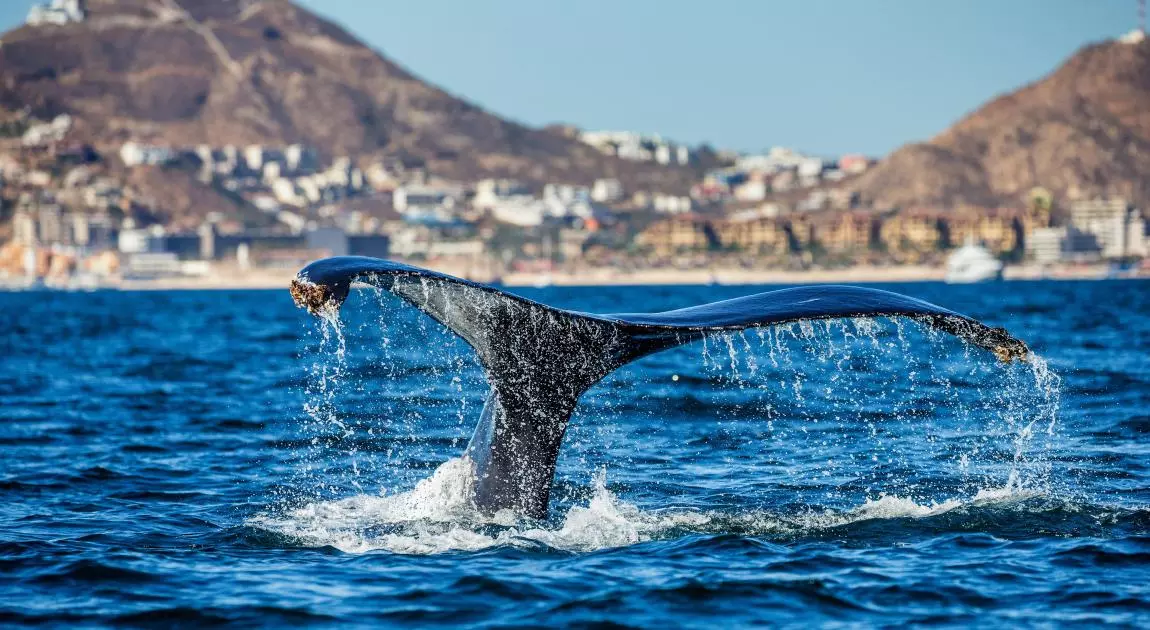My absolute favorite place on Earth to watch whales is along the Pacific Coast. During the winter, there is no better place for this than the southern tip of Baja. Imagine sailing into Cabo, sitting on deck (or on your balcony), holding a cup of hot tea, and enjoying some breakfast while spotting for spouts and splashes from breaching whales ... all while you get ready for your shore excursion in a few hours that will bring you even closer to these amazing animals. While whale-watching excursions are available at several different ports along your Mexican Riviera cruise itinerary ... it is important to plan ahead so you can maximize your time and money!
Questions
What West Coast Cruises Have You Been On?
Book A Cruise
...
Key Points
- The best way to experience whale watching on a Mexican Riviera cruise is to visit during peak migration season (January to March) and book excursions in top spots like Cabo, Loreto, and Magdalena Bay for up-close encounters.
- The Baja Peninsula is home to diverse marine life, including gray, humpback, blue, and even orca whales, making it one of the world's top destinations for whale watching.
- While major cruise ships offer excellent whale spotting opportunities from balconies and observation decks, dedicated whale-watching tours provide more intimate and thrilling experiences.
- Choosing the right excursion—whether a zodiac tour for a close-up view, a sightseeing boat for comfort, or even snorkeling with whale sharks—can greatly enhance your experience.
- Responsible whale watching ensures the safety of these magnificent creatures, so travelers should choose eco-friendly tour operators that follow local wildlife protection guidelines.
Article Index
- Whale Watching: Alaska vs Mexican Riviera Cruises
- Why Choose A Mexican Riviera Cruise For Whale Watching
- Best Time For Whale Watching On A Mexican Riviera Cruise
- Top Baja & Mexican Riviera Whale-Watching Spots
- Whale Watching Spots Only Available on Expedition Cruises
- Choosing the Right Whale-Watching Excursion
- Managing Expectations
- Practicing Responsible Whale Watching
- Watching Whales from the Cruise Ship
- A Once-in-a-Lifetime Experience at Sea
Whale Watching: Alaska vs Mexican Riviera Cruises
Mexico's Pacific coast offers superior whale watching since gray whales migrate there to breed in winter, often allowing intimate encounters with mothers and calves in calm, warm waters. While Alaska's summer cruise season showcases spectacular humpback whale behaviors against dramatic glacial backdrops, the weather can be unpredictable, and the whales typically maintain more distance from boats.
For many people either one of these options represents is a once-in-a-lifetime experience exploring the marine life that inhabits the wast coast of North America but it is actually surprisingly affordable and accessible thanks to an increase in west coast cruises. From Alaska and Canada down to the Mexican Riviera these captivating coastal landscapes combine to offer unparalleled whale-watching experiences.
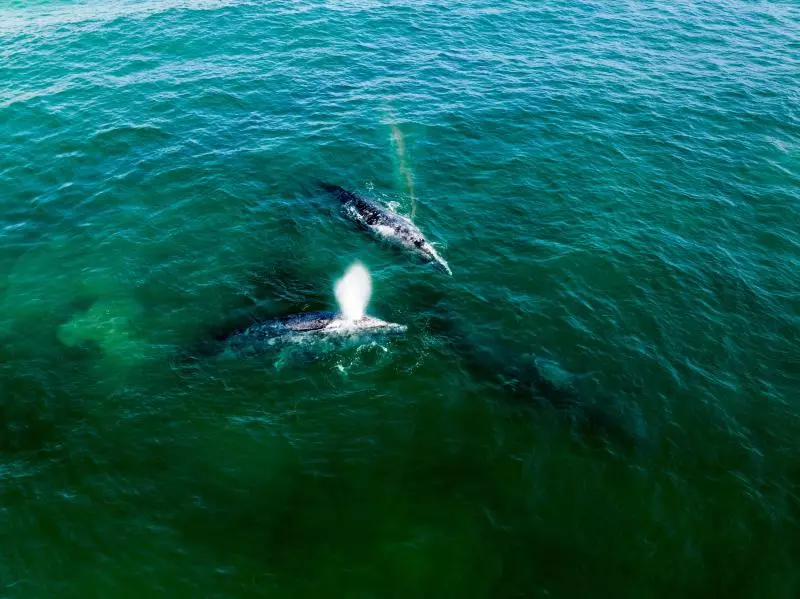
Why Choose A Mexican Riviera Cruise For Whale Watching
Experience the incredible marine life of the Baja Peninsula on a Mexican Riviera cruise. The region has impressive whale migration patterns and unique whale-watching experiences. Local regulations allow small boats to get remarkably close to the gray whales, which are known for being curious and sometimes even approaching vessels to be touched by passengers. These interactions in the calm, sheltered lagoons create unforgettable moments that few other whale watching destinations can match.
Baja Peninsula's Rich Marine Life
The Baja Peninsula, a stunning stretch of land that separates the Pacific Ocean from the Sea of Cortez, is home to an incredible array of marine life.
Travelers visiting this enchanting area can expect to encounter various types of whales, including gray, blue, humpback, fin, sperm, minke, and even orcas (killer whales).
Additionally, other marine creatures such as dolphins, seals, sea lions reside within these nutrient-rich waters. Snorkelers and divers will be enthralled by the vibrant coral reefs teeming with colorful fish species and intriguing underwater landscapes found here.
Impressive Whale Migration Patterns
The impressive whale migration patterns in the waters surrounding the Baja Peninsula draw visitors from around the world seeking a glimpse of these magnificent creatures.
During peak migration season, whales travel thousands of miles to reach their breeding grounds in Mexico's warm coastal waters. Gray whales embark on one of the longest migrations known amongst mammals, journeying up to 12,000 miles roundtrip between their feeding grounds in Arctic seas and their calving lagoons along the Pacific Coast of Baja California.
These fascinating voyages offer tourists on Mexican Riviera cruises a unique opportunity to observe not only gray and humpback whales but also other species such as blue, sperm, minke, fin, and orcas during different seasons throughout their migratory routes.
In addition to these captivating cetaceans, travelers may encounter marine life like seals and sea lions which inhabit areas like Land's End near Cabo San Lucas or Todos Santos Island off Ensenada's coast.
Unique Whale-Watching Experiences
A journey through the Mexican Riviera offers vacationers a plethora of extraordinary whale-watching experiences. The Baja Peninsula, renowned for its rich biodiversity, hosts majestic species such as gray whales, blue whales, humpback whales, sperm whales, minke whales and even orcas.
One standout experience is snorkeling alongside whale sharks in Ensenada between October and late April. These gentle giants are not only captivating but also incredibly friendly to snorkelers who dare to venture into their realm.
Another can't-miss adventure takes place at Magdalena Bay where visitors can partake in guided tours tailored towards interaction with gray whale mothers and calves – expect tender moments when these curious babies approach small boats seeking some human touch.
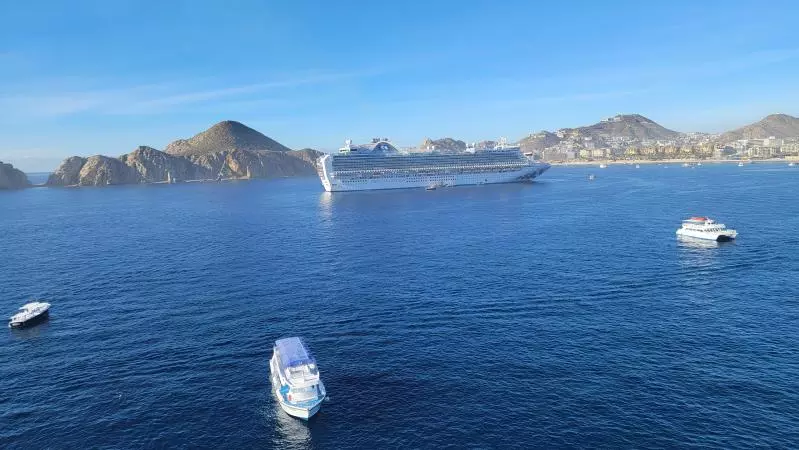
Best Time For Whale Watching On A Mexican Riviera Cruise
The peak season for whale watching runs from December to April, with January through March being the best months for spotting newborn whale calves. During this time, whale activity is at its highest, and you’re likely to witness incredible behaviors such as breaching, spy-hopping, and social interactions.
December – Early Arrivals
Whale migrations begin, with the first sightings of gray whales, humpbacks, and even occasional blue whales off the coast of Baja.
January to March – Prime Season
This is the peak time for whale watching, as the highest number of whales gather in Baja's warm, shallow waters to mate and give birth.
April – Late Season Sightings
Many whales begin their migration back north, but travelers can still spot mothers and calves lingering in the lagoons and coastal waters.
Weather conditions also play a role in your experience. While Baja enjoys mild temperatures year-round, mornings can be cool, so layering your clothing is essential for comfort on excursions.
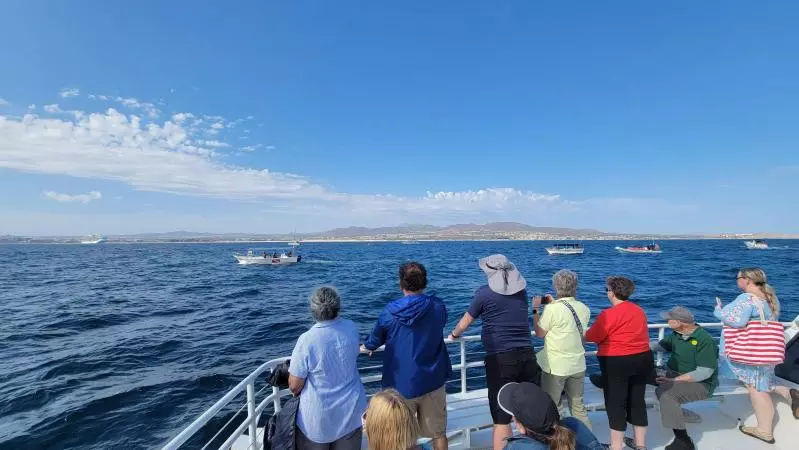
Top Baja & Mexican Riviera Whale-Watching Spots
You'll have excellent whale-watching opportunities if your cruise stops in any of these ports.
Cabo San Lucas
The most accessible and popular whale-watching location for guests on Baja and Mexican Riviera cruises is Cabo San Lucas.. With tours available directly from the marina. You can even spot whales from the ship as you sail into port.
Loreto
Known for encounters with blue whales, the largest mammals on Earth, as well as humpbacks and dolphins in the surrounding waters. Loreto is a hidden gem for travelers seeking close encounters with marine life.
La Paz
La Paz is a top whale-watching destination, offering a chance to see gray whales, humpbacks, and even the mighty blue whale in the nearby waters. It's also one of the best places in the world to swim with whale sharks- despite not being true whales, these gentle giants provide an unforgettable experience for anyone looking to get up close with massive marine life.
Mazatlan
Mazatlán’s deep waters and warm climate attract humpback whales during their migration, making it a fantastic place to spot these majestic creatures. Many tours operate right off the coast, giving visitors a chance to see breaching whales and even playful dolphins on the same trip.
Puerto Vallarta
Banderas Bay, where Puerto Vallarta is located, is a prime breeding and calving area for humpback whales from December to March. The bay’s warm, calm waters provide a safe environment for mothers and their newborn calves, making it one of the most reliable places for whale sightings. Many tours operate from the marina, offering close encounters with these magnificent creatures, often including dolphins and even manta rays.
Whale Watching Spots Only Available on Expedition Cruises
One of the things that makes Baja cruising so interesting is that the best spots are often the most secluded and the big ships just sail right by so most guests never even realize what they are missing. Here are a few spots that you can sometimes visit on an expedition cruise for some up close whale-watching encounters.
Magdalena Bay
A prime location for gray whales, where they migrate to give birth and nurture their young. This area offers some of the closest encounters with these gentle giants. While major cruise ships such as those from Princess, Carnival, or Holland America Line don't stop in Magdalena Bay, some expedition cruises such as National Geographic Expeditions may periodically offer visits here. However, all of the cruises to Cabo San Lucas go right by here and so you may see increased whale activity
San Ignacio Lagoon
Similar to Magdalena Bay, this protected whale sanctuary is not on the itinerary for big ship cruises but may be visited by expedition cruises. This is a great spot to see gray whales as they are known for their curious and friendly interactions with boats.
Guerrero Negro
Finally, this spot also isn't visited by major cruise lines but may be on the itinerary of expedition cruises exploring the Pacific side of Baja. The shallow bay is another favorite for grey whales and their calves.
When putting this list together I was a bit conflicted. While I recognize that most cruisers heading out on a Baja or Mexican Riviera cruise will never visit spots like Guerroro Negro, San Ignacio, or Magdalena Bay - they are some of the best spots in the world to see these incredible marine mammals. In fact, if you truly are dedicated to seeing these spaces, an expedition cruise is probably the best way of doing it - short of renting your own private yacht charter and doing a tour here on your own!
However, despite the challenges with visiting here for most people, it also points to the fact that the entire pacific coast of Baja and down past Puerto Vallarta even is one huge spot for whale watching excitement. After all, if whales are going in and out of these hidden bays and secluded shallow lagoons then they are obviously out in the ocean by these spots as well. You just need to be alert and ready to spot them.

Choosing the Right Whale-Watching Excursion
When selecting a whale-watching tour, you’ll have several options depending on your preference for comfort and adventure:
- Zodiac boat tours – Small, fast boats that allow for up-close encounters with whales.
- Sightseeing tour boats – Larger vessels with comfortable seating and onboard narration.
- Kayaking – A more adventurous option that allows you to paddle alongside whales in calmer waters.
- Private charters – A personalized and intimate experience tailored to your group’s preferences.
- Swimming with whale sharks – While not technically whale watching, this experience in Baja’s waters is a once-in-a-lifetime opportunity to snorkel with the largest fish in the world.
Managing Expectations
It's important to manage your expectations when going on a whale-watching excursion in Baja or further south in Puerto Vallarta and Mazatlan. While sightings of marine mammals are almost guaranteed, the behavior and activity level of these animals can vary greatly from day to day.
Some days you may see dozens of whales breaching and playing, while others they may be more subdued or difficult to spot.
To make the most out of your experience, pack warm layers for cooler weather conditions and bring eco-friendly sunscreen as well as waterproof gear such as phone pouches or camera bags. If you are early to rise, grab a cup of coffee sit on your balcony and relax. Every winter cruise that I took in the past two years had multiple whale sightings as we rounded the tip of Cabo San Lucas.
However, the activity level was different each time. On some days the whales were breaching and that made them very easy to spot, while other days we had to scan with binoculars to find spouts as they swam along. You will have similar experiences on an excursion too. The difference though is that the captains are all talking with each other and they know exactly where the whales are ... but aside from "seeing them", there's no guarantee of a show.
As a result, it is always critical to be patient while observing the whales in their natural habitat, taking care not to disturb them by getting too close or making loud noises.
Practicing Responsible Whale Watching
Visitors to Baja California should always prioritize responsible whale watching to ensure the safety and protection of these magnificent creatures. This means following guidelines set by tour operators and local authorities, such as maintaining a safe distance from whales, avoiding loud noises or sudden movements that may startle them, and refraining from touching or feeding them.
It's also important to choose eco-friendly tour options that prioritize the well-being of the whales and their natural habitat.
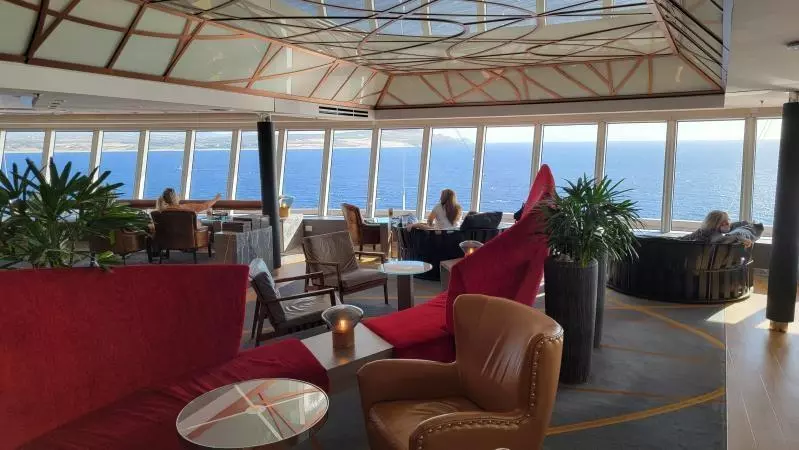
Watching Whales from the Cruise Ship
For those who prefer to stay onboard, there are excellent ways to spot whales from your cruise ship without stepping onto an excursion boat:
- From your balcony – Wrap yourself in a blanket, grab a coffee, and watch for spouts in the distance.
- Observation lounges – Many cruise ships have designated indoor lounges with panoramic ocean views.
- Top deck walks – Walk around the ship’s highest deck for a 360-degree view of the ocean, increasing your chances of spotting whales.
A Once-in-a-Lifetime Experience at Sea
A whale-watching cruise along the Mexican Riviera is more than just a sightseeing opportunity—it’s an encounter with nature at its most awe-inspiring. From the first glimpse of a breaching humpback to the unforgettable sight of a mother gray whale guiding her calf, these moments stay with travelers forever.
Did you know that gray whales remember their migration routes across generations, following the same paths their ancestors took for thousands of years? Experiencing this ancient journey firsthand is one of the most humbling experiences a traveler can have.
Thanks for reading. We hope this was helpful!
Why stop now?
Participate In Our Polls | Ask or Answer A Cruise Question | Contact Heather to Book Your Next Cruise!
